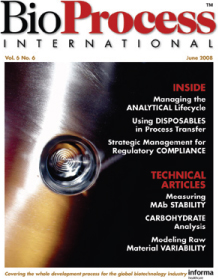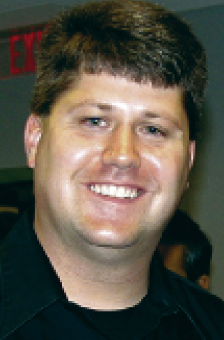
How long have you worked for your current employer, and where did you work before that? When and why did you get involved in the biotechnology industry? What interested you the most about it? Since 2001, I have worked for Centocor R&D, Inc. (a Johnson & Johnson Company) located in the greater Philadelphia, PA area. Prior to that I worked in cardiovascular discovery research at Procter & Gamble Pharmaceuticals in Cincinnati, OH. Being trained as a molecular biologist, I have always been intrigued by the use of recombinant proteins as therapeutics. I think what has interested me most is the exquisite precision that a monoclonal antibody has for a target antigen and how researchers can take advantage of that feature to develop specific and effective therapeutic agents to treat life-threatening diseases.
Which biologics does your company have currently on the market — or in later stages of clinical development? What kinds of production/economicsrelated tools and concepts do you have experience with there? Is the company using these mainly in development of new products — or is it revisiting marketed products too? Centocor currently markets Remicade (a monoclonal antibody against tumor necrosis factor, TNF-alpha) to treat patients with inflammatory disorders including rheumatoid arthritis, Crohn’s disease, and a wide range of other indications. Over the next year, Centocor expects to launch two new products: ustekinumab, a new human monoclonal antibody with a novel mechanism of action that targets the cytokines interleukin-12 (IL-12) and interleukin-23 (IL-23), which are also believed to play an important role in psoriasis; and golimumab, a nextgeneration human anti-TNF-alpha monoclonal antibody for a number of inflammatory disorders including rheumatoid arthritis, psoriatic arthritis, and ankylosing spondylitis.
Who will be most interested in the subject matter of your session at the BPI Conference & Exhibition? What do you expect them to ‘take away’ with them? Which presentations/sessions at the conference are you most looking forward to attending? And what were your main concerns in helping to put together the Scale-Up track? Scientists and/or engineers and R&D directors will be most interested in attending and partcipating in the ‘Advances in Cell Line Development and Clone Selection’ session. Through a series of informative presentations, researchers will highlight ‘state-of-the-art’ approaches to identifying and isolating high-producing stable cell lines. Featuring presentations from Abbott, Amgen, Lonza, and Wyeth, scientists/engineers will also explain how to most effectively and expeditiously develop lead molecules into novel therapeutic agents.
SCIENTIFIC ADVISORS
Timothy S. Charlebois, senior director of drug substance development at Wyeth BioPharma
Geoffrey Francis, chief scientist in applied R&D at Novozyme BioPharma AV Ltd.
Laurel Donahue-Hjelle, director of cell line development at Invitrogen Corporation
Kevin J. Kayser, R&D manager in cell line engineering for SAFC Biosciences
Dennis M. Kraichely, principal research scientist in expression technologies at Centocor, Inc.
Suzanne Kuo, senior engineer in late-stage cell culture process development at Genentech, Inc.
John Mott, director of bioprocess R&D in cell line development at Pfizer Global Biologics
Charles Sardonini, associate director of process engineering and development for Genzyme Corporation
Thomas Seewoester, director of process development at Amgen Inc.
Gary Welch, director of process development at Abbott Bioresearch Center
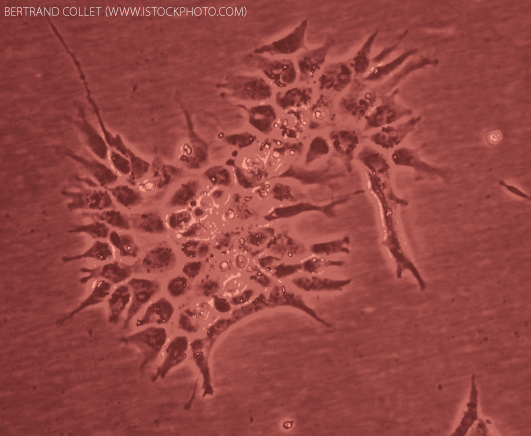
ALISON PORTER
senior science leader at Lonza Biologics ple
“Selecting GS-CHO Cell Lines for Antibody Manufacture,” 8:15 AM Thursday 25 September 2008: After transfection, a sequential series of screens is typically used to select a ‘desirable’ cell line for antibody manufacture from the heterogeneous population. Cell line behavior in such a strategy was studied and compared with subsequent behavior in bioreactor culture. Although highly productive cell lines can be selected, potential strategies for improving the ‘hit rate’ of identifying ‘good’ manufacturing cell lines will be discussed.
Who will be most interested in the subject matter of your presentation at the BPI Conference & Exhibition? My presentation is likely to be of interest to anyone involved in cell line and process development for a mammalian production process. The presentation will hopefully give food for thought when designing a strategy for the selection of a cell line that is ‘suitable’ and ‘desirable’ for a given production process.
What kinds of screening methods are typically involved? Will you be discussing a new method(s) — or modifications to old ones? In my presentation, I will discuss issues that were exhibited by a ‘typical’ selection strategy and potential routes for its improvement. It will be applicable for current selection strategies and for what people do in the future.
How long have you worked in biotech? What degrees do you hold, and from where? From her official bio: ‘Alison has been at Lonza for 10 years and has considerable experience in the construction of recombinant cell lines using mammalian cell lines. As a result of this, Alison is one of the team that provides assistance and advice to customers working with the GS expression system outside of Lonza. Prior to joining Lonza Biologics, Alison spent two years at Bio Products Laboratory in the United Kingdom, working with recombinant antibody producing cell lines and using hollowfiber culture systems.’
This year’s BPI Conference is in Anaheim, CA, home to the original Disneyland. Have you ever been there before? Do you have any recommendations for fun outside the conference that you’d like to share with your fellow conference goers? I have never been to Anaheim/Disneyland before, so unfortunately I can’t give any recommendations. In fact, I have never been anywhere ‘Disney’ before, so it will be quite an experience.
ROBIN A. HELLER-HARRISON
associate director of cell and molecular sciences at Wyeth BioPharma
“Managing Cell Line Instability and Its Impact During Rapid Cell Line Development,” 11:30 AM Thursday 25 September 2008: Successful phase 1 cell line development relies on the ability to generate stable, high-producing clones in a short timeframe. Although we consistently achieve this objective, we have observed expression instability in some of our clones. We will present data from independent case studies, describe the methods and tools we use to investigate instability, and discuss some operational consequences of instability upon our cell line development paradigm.
Who will be most interested in the subject matter of your presentation at the BPI Conference & Exhibition? Individuals in upstream process development will be most interested.
What do you expect them to ‘take away’ with them? With very aggressive development timelines, cell line stability becomes a highly critical issue for upstream process groups to deal with. It is important to develop tools to identify unstable clones early as well as to optimize expression systems to eliminate the root causes of instability.
And which other presentations/sessions are you most looking forward to attending? I am looking forward to Nan Lin’s presentation on biomarkers associated with cell line stability (in the ‘Advances in Cell Line Development and Clone Selection’ session); Alison Porter’s presentation on Selecting GS-CHO Cell Lines for Antibody Manufacture (same session); and the panel discussion on the future of cell engineering (‘A Role for Media Innovation’).
How long have you worked in biotech? What degrees do you hold, and from where? From her official bio: ‘Dr. Heller-Harrison has been head of cell line development within the cell and molecular sciences group, part of the drug substance development organization at Wyeth Bioparma (formerly Genetics Institute) since 2004. In this capacity, she shares responsibility for all transfection to IND activities for pipeline products. Her group also contributes to cell line and process improvement activities for post-phase 1 and commercial products, including their associated regulatory filings, and is responsible for all technology development improvements related specifically to cell line development. Before joining Wyeth Biopharma, Dr. Heller-Harrison was an assistant professor at the University of Massachusetts Medical School in Worcester, MA, in its program of molecular medicine and Department of Biochemistry and Molecular Biology, where she was the recipient of research grants from the US National Institutes of Health, the American Diabetes Association, and the Juvenile Diabetes Research Foundation. She received her PhD incell biology from the University of Washington School of Medicine in Seattle, WA, and her BS in chemistry from Hobart and William Smith Colleges in Geneva, NY.’
When and why did you get involved in the biotechnology industry? I initially pursued a career at Genetics Institute (Wyeth) because I was seeking a career change from academia with the added desire of reducing a long commute. I had heard from a number of individuals in biopharma/biotech that Genetics Institute/Wyeth offered the opportunity to do great basic science as well as experience the more applicative side of molecular medicine.
MARTIN ALLEN
principal research scientist at Wyeth, is speaking for Mark Leonard, who is unable to attend.
“The Impact of Sequence on Product Attributes and Process Outcome,” 2:45 PM Friday 26 September 2008: Similarities among monoclonal antibodies have enabled the implementation of efficient platform process development procedures, leading to dramatically shortened process development timelines. Our diversified portfolio at Wyeth includes antibodies, Fc-fusion proteins, and smaller, simpler, nonglycosylated molecules. This talk will illustrate how the choice of product type and sequence can have a significant impact on the process development options and outcome.
Who will be most interested in the subject matter of your presentation at the BPI Conference and Exhibition? Scientists and engineers with an interest in understanding how a product affects the process used to make it.
What do you expect them to “take away” with them?
Wyeth’s perspective and experiences with early product and expression system selection
Does Wyeth focus more on types of molecules than on specific disease areas? Or do these go hand in hand? These go hand in hand at Wyeth. Selection of molecule type is made based on a number of factors including anticipated needs, target, and disease area.
Which other presentations/sessions are you most interested looking forward to attending? cell culture and upstream processing case studies
How long have you worked in biotech? seven years
What degrees do you hold, and from where? BS from the University of Wisconsin-LaCrosse; PhD from Iowa State University
When and why did you get involved in the biotechnology industry? I got my start in Biotech at Immunex in Seattle, WA, in 2001.
What interested you most about this work? the opportunity to work on molecules and projects that have the potential to positively impact human health and improve people’s lives
RANJINI RAMACHANDER
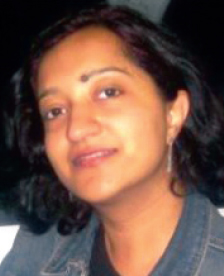
senior scientist at Amgen Inc.
“Manufacturability Assessments for Early Stage Therapeutic Candidate Screenings Using Biophysical Characterization,” 8:45 AM Thursday, 25 September 2008: Transferring lead molecules from research into process development at a relatively fast pace requires a process of candidate selection that assesses not only whether a candidate is active and safe, but also “manufacturable.” Biophysical characterization of lead candidates prior to reaching process development helps rank candidates for conformational and colloidal stability. This assessment is especially useful when binding affinity and bioactivity are comparable among candidates. Case studies of antibodies assessed for manufacturability under process conditions will be presented.
Who will be most interested in the subject matter of your presentation at the BPI Conference & Exhibition? people in the following areas: formulation and analytical sciences, process development, purification sciences
And which other presentations/sessions are you most looking forward to attending? sessions of interest: “Process Characterization and Monitoring During Development and Commercialization of Biopharmaceuticals,” “Production and Economics of Biopharmaceuticals,” and “Scaling Up from Bench Through Commercialization”
How long have you worked in biotech? What degrees do you hold, and from where? When and why did you get involved in the biotechnology industry? What interested you most about this work? From her official bio: “Dr. Ranjini Ramachander has been in the biotech industry over the past four years. She has a PhD in biochemistry from the University of California at Los Angeles and a masters in biotechnology from the Indian Institute of Technology in Bombay, India. At Amgen, Ramachander has been leading early stage manufacturability assessments of therapeutic proteins in formulation and process stability. In her presentation, Ramachander will be presenting a few case studies that describe how these early stage assessments can be used to select the best candidate going forward to process development. A few examples will also be presented describing comparisons of process and formulation stability of antibody therapeutics from different cell lines.”
This year’s BPI Conference is happening in Anaheim, CA, home to the original Disneyland. Have you ever been there before? Do you have any recommendations for fun outside the conference that you’d like to share with fellow conference goers? Yes, good Indian restaurants are available in Artesia, CA — it is probably a 15-20 minute drive, though.
ANLI OUYANG
research scientist in bioproduct R&D at Eli Lilly and Company
“A High-Throughput Platform Development for Clone Selection and Process Development,” 5:00 PM Thursday 25 September 2008: A high-throughput system has been developed at Eli Lilly. Cell densities and titers in this HTP system are compatible with shake flasks in a 14-day fed-batch process, although differences were also observed in some projects. Multiple clones and process conditions can be tested simultaneously in this system to accelerate and improve cell culture process development.
Who will be most interested in the subject matter of your presentation at the BPI Conference & Exhibition? What do you expect them to “take away” with them? Cell line generation and early phase process development folks will be most interested in my talk. I expect them to realize the importance of integrated clone selection and process development.
What products/equipment are key to your HTP platform? microtiter plates and robots
How long have you worked in biotech? What degrees do you hold, and from where? I’ve been working in biotech for two years. I got my PhD in chemical engineering from Ohio State University and joined the biotech industry in 2006.
MYUNG-SAM CHO
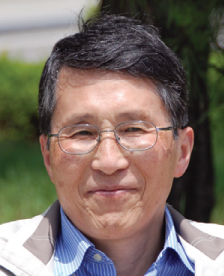
senior advisor at the R&D center of Celltrion, Inc.
“Comparison of a New Human Host Cell Line with CHO for the Development and Production of Recombinant Therapeutics,” 11:00 AM Thursday 25 September 2008: A human cell line (F2N) engineered by somatic hybridization resulted in stable expression of inherited phenotypes. Optimal product quality could be achieved in transient or stable transfection formats with highlevel protein expression. This presentation will cover development of F2N, in comparison with CHO, for the versatile production of recombinant therapeutics.
Who will be most interested in the subject matter of your presentation at the BPI Conference & Exhibition? What do you expect them to “take away” with them? Researchers and involved management will be most interested because this new expression system could solve the bottleneck problem in the early stage of drug development (e.g., through generation of appropriate amount of qualified material on time). Proteins produced from human cells are human-like proteins with appropriate glycoform. Take home message would be that there are appropriate human cell lines for ultimate drug development.
Which other presentations/sessions are you most looking forward to attending? All the sessions are interesting to me.
Q: What is the source of F2N cells? Is it a proprietary system owned by your company? F2N was established through somatic hybridization of human embryonic kidney 293 cells and a human Burkitt’s Lymphoma cell line called Namalwa. Yes it is a proprietary system owned by Celltrion.
How long have you worked in biotech? since 1985
What degrees do you hold, and from where? PhD from Freiburg University in Germany.
When and why did you get involved in the biotechnology industry? for application of my academic experience in the field of human health
What interested you most about this work? application of research for the development of something that is urgently necessary for human beings (e.g., drug development)
JIAN WU
principal scientist in cell science and technology at Amgen Inc.
“Applying Quality by Design in Cell Culture Development to Balance Target Product Quality and Process Robustness,” 2:30 PM Thursday 25 September 2008: Cell line changes can frequently lead to differences in product quality (PQ) between clinical phases and raise product comparability issues. To manage this risk, we use QbD tools such as DOE and risk assessment to study interactions and process variability and to identify key process parameters that impact PQ and process robustness. This presentation will use case studies to illustrate how we balance PQ and process robustness during cell line or process changes.
Who will be most interested in the subject matter of your presentation at the BPI Conference & Exhibition? People from process development, manufacture, and quality will benefit from my talk.
What do you expect them to “take away” with them? They will learn how to balance product comparability and process optimization.
And which other presentations/sessions are you most looking forward to attending? I will attend cell culture and upstream sessions.
How long have you worked in biotech? 11 years
What degrees do you hold, and from where? PhD in chemical engineering from the University of Akron, OH
When and why did you get involved in the biotechnology industry? My dissertation in graduate school was on microbial and cell culture process development, which naturally got me involved in biotechnology industry 11 years ago.
What interested you most about this work? The most interesting part of my work is to advance the technology platform for higher titers or more robust processes.
This year’s BPI Conference is happening in Anaheim, CA, home to the original Disneyland. Have you ever been there before? Do you have any recommendations for fun outside the conference that you’d like to share with fellow conference goers? I have been to Disneyland many times. Sea World is nearby.
JINCAI LI
senior engineer in process R&D at Genentech, Inc.
“Engineering of a Cholesterol-Independent, Non-GS NS0 Cell Line and High-Titer (4.5 g/L) Fed-Batch Culture Using Chemically Defined Media,” 10:15 AM Friday 26 September 2008: NS0 cells require exogenous cholesterol for growth. The cholesterol-dependent NS0 host was engineered and adapted to grow in cholesterol-free medium. The new host, as well as the wild-type, was transfected with a MAb, and in high cell density fed-batch cultures with chemically defined media, the top producing cholesterol-independent clone significantly out-performed the cholesterol-dependent clone, with titer reaching 4.5 g/L vs 3.0 g/L, respectively, while key product quality attributes remained comparable.
Who will be most interested in the subject matter of your presentation at the BPI Conference & Exhibition? people involved in cell culture process development and cell line engineering
What do you expect them to “take away” with them? The key take-away is that the NS0 cell line can be successfully engineered to be cholesterol-independent and retain overall similar growth and culture physiology. The second take-away is that chemically defined media can support high cell growth and high-titer processes with minor modifications to fit different MAb-producing cell lines.
Does your process use a traditional glass or stainless steel bioreactor — or are you using disposables? We’ve heard about some plastics possibly leaching cholesterol from culture media. Do you see this as a problem for culturing NS0 cells in single-use systems? The process uses a traditional glass vessel. Cholesterol absorption is a concern for culturing NS0 cells in disposable bioreactors. But we’ve also done studies in disposable shake flasks without seeing negative results.
How long have you worked in biotech? seven years
What degrees do you hold, and from where? PhD from University of Maryland, Baltimore County (UMBC)
When and why did you get involved in the biotechnology industry? What interested you most about this work? I started working in the industry in 2001. It’s an exciting time for the industry, with great technology and impact on the society.
NAN LIN
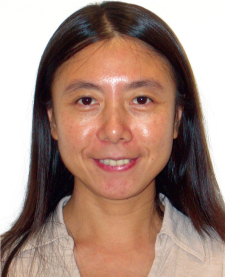
principal R&D scientist in cell sciences and development at SAFC Biosciences
“Discovery of Biomarkers Associated with Expression Stability During Metabolic Selection and Gene Amplification in Recombinant IgG-Producing Chinese Hamster Ovary Cells,” 10:30 AM Thursday 25 September 2008: We used clonal CHO GS cell lines expressing a recombinant human IgG with different productivity and stability pre- and post-gene amplification mediated by MSX. We analyzed copy numbers and mRNA levels of IgG heavy/light chains, transcription profiles using DNA microarray and protein expression profiles 2-D Differential Gel Electrophoresis. Our biomarker discovery studies will shed light on cell engineering target selection.
Who will be most interested in the subject matter of your presentation at the BPI Conference & Exhibition? cell line and upstream development scientists
What do you expect them to “take away” with them? SAFC Biosciences has an active program for biomarker discovery and has made significant progress towards applying biomarkers in cell engineering and media development.
GEOFFREY FRANCIS
chief scientist in applied R&D at Novozymes Biopharma AU Ltd.
(Moderator) “Cell Engineering the Future: A Role for Media Innovation” Panel Discussion, 12:30 PM Thursday 25 September 2008: Over the past decade, the productivity of mammalian cell culture processes has improved dramatically. Gene copy number and clonal selection strategies have underpinned this improvement. Is further improvement achievable from cell engineering? Novel media components including bioactive molecules could enhance productivity gains from cell engineering by favorably regulating cells’ physiological responses.
Who will be most interested in the subject matter of your panel discussion at the BPI Conference & Exhibition? Anyone involved in the upstream aspects of producing recombinant proteins in mammalian cells will be interested — and particularly those focused on improvements in cell culture yields in the manufacturing of biotechnology products, from protein biologics and vaccines through to any mammalian cell based applications.
What do you expect them to “take away” with them? I would hope that participants will get an appreciation of the important and crucial role that growth factors and other bioactive factors play in the physiological well being of the mammalian cells they use in their processes, whatever the end product is.
And which other presentations/sessions are you most looking forward to attending? I am looking forward to all the sessions across the program, which reflects my own broad personal interests in biotechnology processes and also that of my company, Novozymes Biopharma.
What, if any, downstream issues will be involved when using the novel media components mentioned in your abstract? There will primarily be issues related to improved yield of product that will flow to the downstream stage of the manufacturing process. Another aspect of successful use of our media supplements is their ease of removal during the downstream process and the availability of sensitive assays to monitor their in-process removal and also absence in final products.
How long have you worked in biotech? I’m a protein biochemist by training, with extensive career experience in the life sciences and biotechnology including drug discovery, protein expression, protein isolation and purification, manufacturing process development for natural and recombinant proteins, and more recently a focus on cell biology. I have a long and successful career in research and development within government, academia, and industry over a period of more than 35 years.
What degrees do you hold, and from where? I originally had a BSc from the University of Adelaide in Australia. My career publications include more than 110 scientific papers in refereed international journals, invited reviews and book chapters, and seven patent families.
When and why did you get involved in the biotechnology industry? In 1991-2002 I was a cofounder of the Cooperative Research Centre for Tissue Growth and Repair and key inventor of the patents leading to the public listing and success of biotechnology spin-out company Gropep Ltd., which was acquired in late 2006 by Novozymes A/S. I have had a long interest in the application of the basic life sciences to both drug development and biotechnology processes.
What interested you most about this work? It gave our group at Novozymes Biopharma another opportunity to apply our knowledge of growth factors and other bioactive molecules, developed over a long period of research and development, to maximize the performance of mammalian cells in industrial manufacturing processes for the benefit of the industry.
